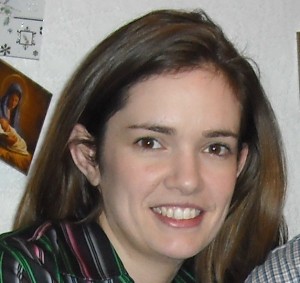Note: This blogpost by Current SPARC Steering Committee Member, Kevin Smith, originally appeared on his Duke University Scholarly Communication Blog
All of the presentations at the SPARC Open Access meeting this week were excellent. But there was one that was really special; an early career researcher named Erin McKiernan who brought everyone in the room to their feet to applaud her commitment to open access. We are sometimes told that only established scholars who enjoy the security of tenure can “afford” to embrace more open ways to disseminate their work. But Dr. McKiernan explained to us both the “why” and the “how” of a deep commitment to OA on the part of a younger scholar who is not willing to embrace traditional, toll-access publishing or to surrender her goals of advancing scholarship and having an academic career.
Erin McKiernan is a Ph.D from the University of Arizona who is now working as a scientist and teacher in Latin America. Her unique experience informs her perspective on why young scholars should embrace open access. Dr. McKiernan is a researcher in medical science at the National Institute of Public Health in Mexico and teaches (or has taught) at a couple of institutions in Latin America. For her, the issue is that open access is fundamental to her ability to do her job; she told us that the research library available to her and her colleagues has subscriptions to only 139 journals, far fewer that most U.S. researchers expect to be able to consult. Twenty-two of that number are only available in print format, because electronic access is too expensive. This group includes key titles like Nature and Cell. A number of other titles that U.S. researchers take for granted as core to their work — she mentioned Nature Medicine and PNAS — are entirely unavailable because of cost. So in an age when digital communications ought to, at the very least, facilitate access to information needed to improve health and treat patients, the cost of these journals is, in Dr. McKiernan’s words, “impeding my colleagues’ ability to save lives.” She made clear that some of these journals are so expensive that the choice is often between a couple of added subscriptions or the salary of a researcher.
This situation ought to be intolerable, and for Dr. McKiernan it is. She outlined for us a personal pledge that ought to sound quite familiar. First, she will not write, edit or review for a closed-access journal. Second, she will blog about her scientific research and post preprints of her articles so that her work is both transparent and accessible. Finally, she told us that if a colleague chose to publish a paper on which she was a joint author in a closed-access journal, she would remove her name from that work. This is a comprehensive and passionately-felt commitment to do science in the open and to make it accessible to everyone who could benefit from it — clinicians, patients and the general public as well as other scholars.
Listening to Dr. McKiernan, I was reminded of a former colleague who liked to say that he “would rather do my job than keep my job.” But, realistically, Dr. McKiernan wants to have a career as a teacher and research scientist. So she directly addressed the concerns we often hear that this kind of commitment to open access is a threat to promotion and tenure in the world of academia. We know, of course, that some parts of this assertion are based on false impressions and bad information, such as the claim that open access journals are not peer-reviewed or that such peer-review is necessarily less rigorous than in traditional subscription journals. This is patently false and really makes little sense — why should good peer-review be tied to a particular business model? Dr. McKiernan pointed out that peer-review is a problem, but not just for open access journals. We have all seen the stories about growing retraction rates and gibberish articles. But these negative perceptions about OA persist, and Dr. McKiernan offered concrete suggestions for early-career researchers who want to work in the open and also get appropriate credit for their work. Her list of ideas was as follows (with some annotations that I have added):
1. Make a list of open access publication options in your particular field. Chances are you will be surprised by the range of possibilities.
2. Discuss access issues with your collaborators up front, before the research is done and the articles written.
3. Write funds for article processing charges for Gold open access journals into all of your grant applications.
4. Document your altmetrics.
5. Blog about your science, and in language that is comprehensible to non-scientists. Doing this can ultimately increase the impact of your work and can even lead sometimes to press coverage and to better press coverage.
6. Be active on social media. This is the way academic reputations are built today, so ignoring the opportunities presented is unwise.
7. If for some reason you do publish a closed-access article, remember that you still have Green open access options available; you can self-archive a copy of your article in a disciplinary or institutional repository. Dr. McKiernan mentioned that she uses FigShare for her publications.
The most exciting thing about Erin McKiernan’s presentation was that it demolished, for many of us, the perception of open access as a risky choice for younger academics. After listening to her expression of such a heartfelt commitment — and particularly the pictures of the people for whom she does her work, which puts a more human face on the cost of placing subscription barriers on scholarship — I began to realize that, in reality, OA is the only choice.
